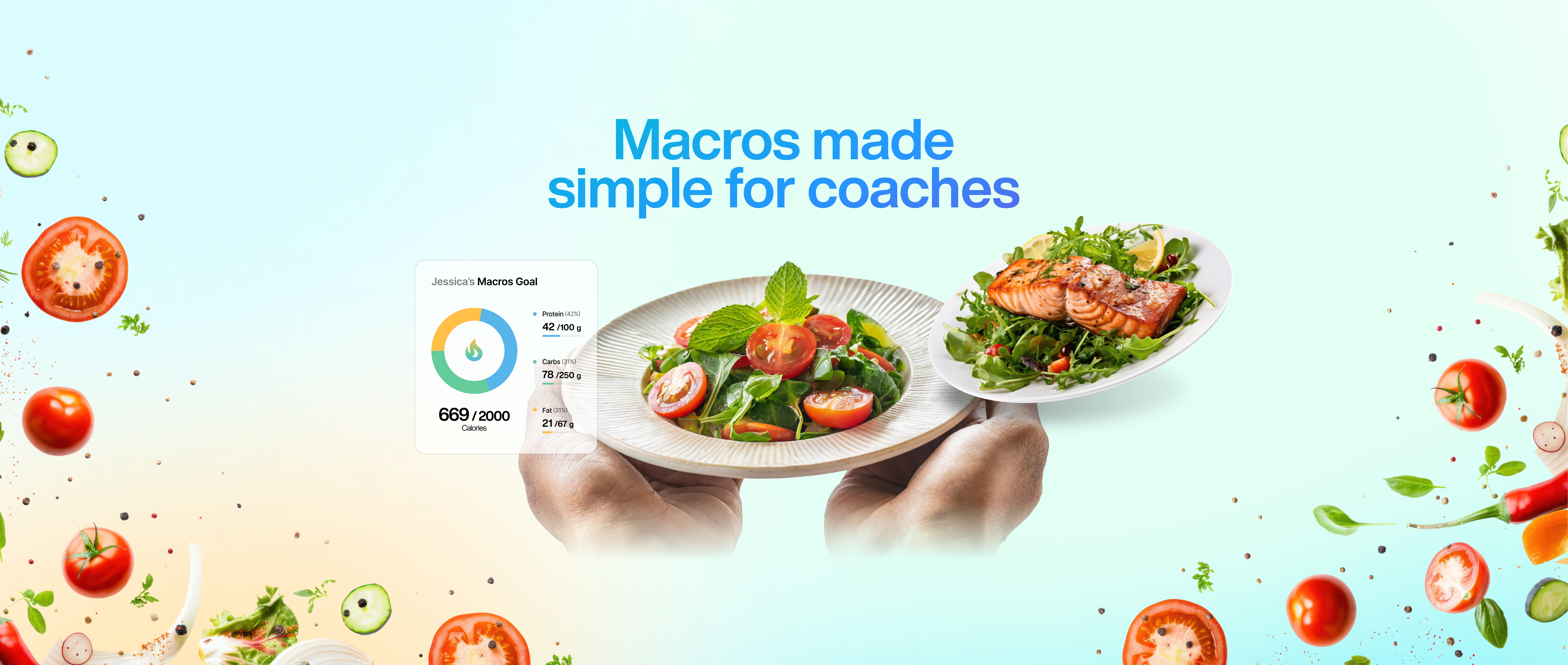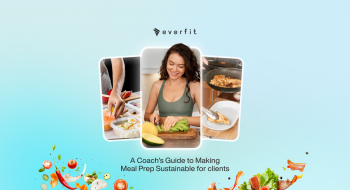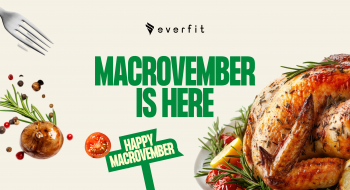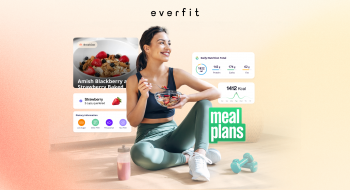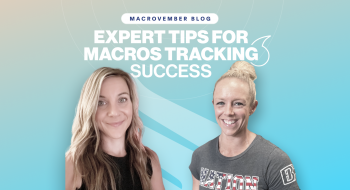Looking to elevate your coaching business? Understanding macros and adding nutrition coaching into the mix is a powerful way to do it, and here’s how.
Why Coaches Need to Understand Macros
In the world of health and fitness coaching, a lot goes into the breakdown of what actually constitutes good health and fitness. Even if you’re a fitness coach, there can be more to your practice than just training your clients. Nutrition is a key pillar of health, but many clients and even some coaches can be confused about macronutrients, or macros for short.
Having a solid understanding of macros allows a coach to really deepen their work and get better results. More specifically, it helps clients to improve their overall body composition and performance. It also allows coaches to debunk common nutrition myths and provide the correct guidance to clients without having to step outside their scope of practice.
In this blog post, we’re going to break down macros in a simple, practical way – so that you can confidently educate your clients and enable them to achieve the results they’re looking for.
What Are Macros? The Essential Building Blocks
When it comes to nutrition coaching, if you want to be able to support your clients on their holistic health and fitness journey, having the right knowledge of macros and how they work is key.
Macronutrients can be simply defined as the different types of fuels that are required within your diet. They’re seen as the crucial nutrients needed in large quantities for our bodies to function properly. These are split into three different groups – protein, carbohydrates, and fats.
Protein
Protein is seen as the building block of the body. It’s broken down into amino acids within the body – 9 of which are classed as essential and are required for our nutritional intake. Protein is essential for muscle repair, satiety, organ and tissue synthesis, and overall health.
Carbohydrates
Carbs are the body’s primary source of fuel. When digested, they’re turned into glucose which is crucial for both energy and recovery. Dietary fiber also comes under this category and is used to support healthy digestion.
Fats
Fats are vital for hormone production and brain function. They are also an alternative source of energy to carbohydrates when glycogen stores are depleted. Fats can be kept in the body as stored energy and utilized as a reserve source of fuel when needed.
When combined, macros contribute to the total caloric intake in the body. However, in order to get that right, achieving the right balance is key. And understanding how to balance macros can often come down to the different goals your clients will have.
Practical Applications: Helping Clients Understand & Apply Macros
In order to provide a level of nutrition coaching to your clients, here’s how you can practically apply macros to your practice and support your clients in understanding how they work.
Step 1: Establishing a Macro Baseline
Here, you’re looking to teach clients to track their food in order to build up an initial awareness of what their current baseline macro split actually is, along with the total consumption. However, it’s very important to nurture this without obsession.
At this point, it’s important to screen for any past or current eating disorders or body image disorders. You can find screening questions here to support you.
Everfit’s food logging features can be a great help to your clients. They can also track their habits to monitor their intake trends.
Step 2: Adjusting Macros for Different Goals
When they have an understanding of what their current natural macro split tends to look like, this can be adjusted depending on their goal. Some examples of how this would look are:
For Fat Loss:
- Create a very slight calorie deficit that is limited to a 20% reduction in estimated energy needs or less.
- The ideal priority here should be an adequate protein goal first, followed by making sure that the minimum fat requirement is met. Then the carbohydrate levels can be adjusted with the remaining macros.
- This ensures that all of the essential nutrient standards are being met and that adjustments are made safely.
For Muscle Gain:
- Build a caloric surplus with enough protein and carbs in order to fuel muscle growth.
- However, bear in mind that clients newer to exercise may not need a surplus here, so it’s important to consider each client’s situation and experience individually.
For Performance:
- Optimize carb intake to properly support endurance and recovery for your clients.
- Utilize Everfit’s habit goal capabilities for their nutrition instead of just tracking it.
Step 3: Simplifying the Process for Clients
Once your clients are feeling more confident with their macros, they won’t need to track things forever. By teaching correct portion control and prioritizing the focus on food quality, they can let go of needing to stick to strict numbers. But you can always have them go back to tracking for a week or two every few months to dial back in their portion control knowledge as things begin to slacken over time.
A simple way of them doing this can be using the PN style measurements of working with the palm, thumb, and handful methods.
Ultimately, it’s always a good idea to coach the idea of flexibility and positivity around food. An example of this is the 80/20 rule, which encourages clients to fuel their bodies with the correct nutrients while enjoying foods they love.
This helps to contribute to a healthy attitude to food and nutrition and avoid the all-or-nothing approach to dieting which can lead to a toxic mindset and poor mental health.
Helping Clients Make Smart Macro Choices (Without Overcomplicating It)
To best help your clients adjust to working with macros in their diet and make the right choices for their goals, focusing on keeping your recommendations simple and uncomplicated can help. As with any change, the key here is to approach it with small tweaks to their current diet. This makes things more effective and sustainable in comparison to an immediate and drastic overhaul.
When you’re delivering any nutrition coaching as part of your practice, here are five ways to simplify things while providing your clients with the best possible advice:
1. Quality Over Quantity
Remember, it’s never just about hitting those macro numbers. Choosing a wide variety of nutrient-dense foods is key here. Variety will help them to avoid micronutrient insufficiency in areas such as vitamin A, Magnesium, Zinc, Folate, EPA, DHA, and ALA.
2. Focus on the Best Protein Sources
This will often depend on your client’s own dietary requirements, such as whether they prefer animal-based or plant-based proteins – or a mix of both. Again, working with a mix of protein sources here can help get those different amino acids throughout the day.
3. Understand Carbs
With both fast-digesting and slow-digesting carbs on the table, it can be great to mix things up here. Just be aware of the additional protein requirements that may be needed here.
4. Prioritize Healthy Fats
Focusing on working with the right fats for your client’s diet can also be key. Here, it’s all about educating them on when and how to include the right sources for both energy and satiety throughout the day. Here, Omega 3s are the best, closely followed by Omega 6s.
5. Teach Plate-Building Strategies
To help your clients find a good balance with their macros for the longer term, teaching them how to build their plates with a variety of different nutrient sources can help. Again, this will have a long-term benefit to their goals over just tracking alone. Working with the Everfit habit-tracking functionality is a great way to do this.
Coaching Beyond the Numbers: Real-World Macro Coaching Strategies
As you’re working with your clients on nutrition coaching, it’s important to make sure that you’re making adjustments based on biofeedback and not just the data. For example, looking for signs that a client may need more carbs or fats in their diet based on their energy, sleep, and recovery. Again, this is why it’s important to make sure that fats are above the safe minimum requirement here – you can also consult a health professional if a client has excessive or peculiar symptoms.
It’s also important to manage their expectations well. Ensure that they know why rapid fat loss or muscle gain isn’t sustainable, and educate them on the importance of long-term progress. Here, they can pay attention to some of the core small markers of progress, such as more energy and vigour, less stress, improved strength, and so on.
Ultimately, it’s the 1% better everyday mentality that pays off here. Looking to support them in building sustainable habits first can make all the difference – particularly before focusing on detailed macro tracking. Using Everfit tools for accountability can be perfect here. With habit reminders, check-ins, and feedback loops all supporting them on their journey.
Final Thoughts: Making Macros Work for Coaches and Clients
Understanding macros doesn’t have to be overwhelming for your clients. When you look to focus on simplicity and practical application, it can be easier for them to implement this into their everyday lives.
When you’re educating your clients on both flexibility and balance in your nutrition coaching, rather than dieting extremes, you can help to build a healthy approach to food. By encouraging your clients to build self-awareness around food choices rather than relying solely on numbers, you’re also allowing them to create sustainability in their health and fitness journey. This will help them with their long-term health journey and see success with their particular goals.




